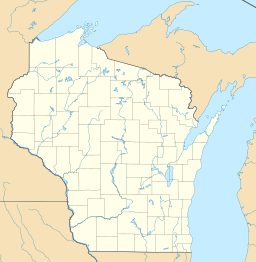Spring Lake (Waushara County, Wisconsin) facts for kids
Quick facts for kids Spring Lake |
|
|---|---|
| Location | Waushara County, Wisconsin |
| Coordinates | 44°00′40″N 89°09′39″W / 44.0111458°N 89.1607253°W |
| Type | lake |
| Surface elevation | 787 feet (240 m) |
Spring Lake is a lovely lake found in Waushara County, Wisconsin, in the United States. It is a natural body of water that offers a quiet escape for people who enjoy nature and outdoor activities.
Contents
About Spring Lake
Spring Lake is a freshwater lake located in the central part of Wisconsin. It is known for its clear water and peaceful surroundings. Lakes like Spring Lake are important parts of the local environment. They provide homes for many plants and animals.
Why is it Called Spring Lake?
The name "Spring Lake" tells us something special about how this lake gets its water. It was named because many natural springs flow into it. A spring is a place where underground water comes up to the surface. These springs help keep the lake full and its water fresh.
Where is Spring Lake Located?
Spring Lake is located in Waushara County, Wisconsin. This county is in the middle of Wisconsin, a state in the upper Midwest region of the United States. Waushara County is known for its many lakes and natural areas, making it a popular spot for outdoor adventures.
What is Waushara County Like?
Waushara County is a beautiful area with lots of forests, farms, and, of course, lakes. It is a great place for activities like fishing, boating, and hiking. The county works to protect its natural resources, including its many lakes and rivers.
What is a Lake?
A lake is a large body of water surrounded by land. Most lakes are freshwater, like Spring Lake. Lakes are different from rivers, which are flowing water, and oceans, which are very large and salty. Lakes can form in many ways, such as from glaciers, volcanoes, or even when rivers change course.
The Importance of Lakes
Lakes are very important for many reasons:
- They provide homes for fish, birds, and other wildlife.
- They are a source of drinking water for many communities.
- They offer places for people to swim, fish, and boat.
- They help control floods by holding excess water.
- They play a role in the Earth's water cycle.



